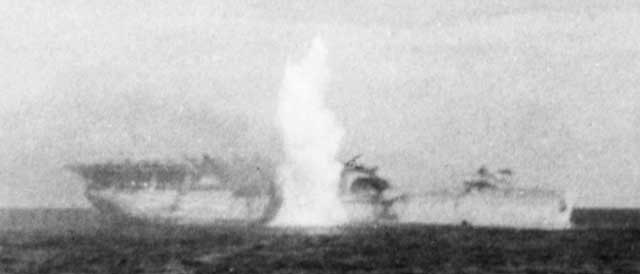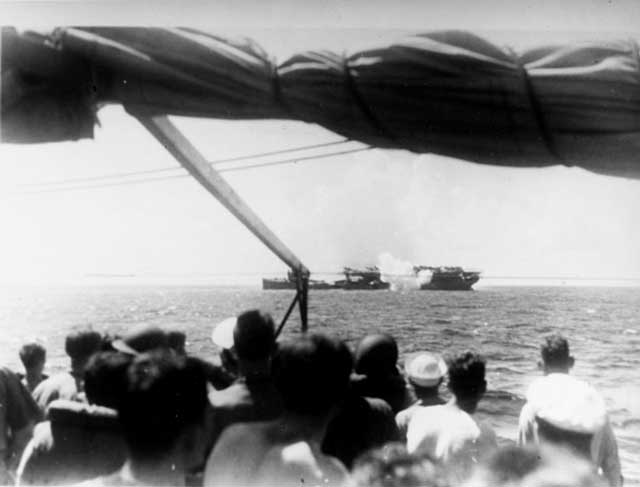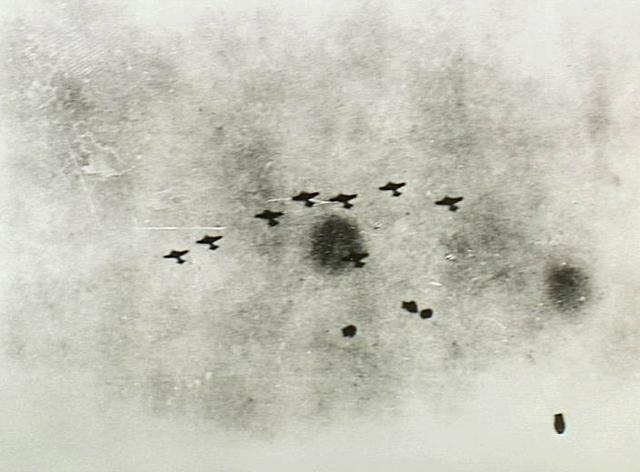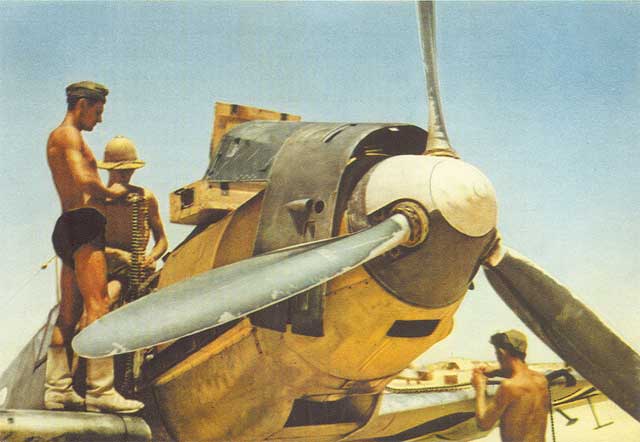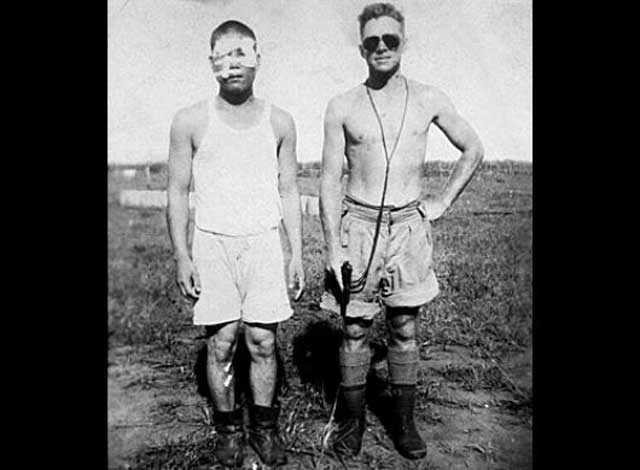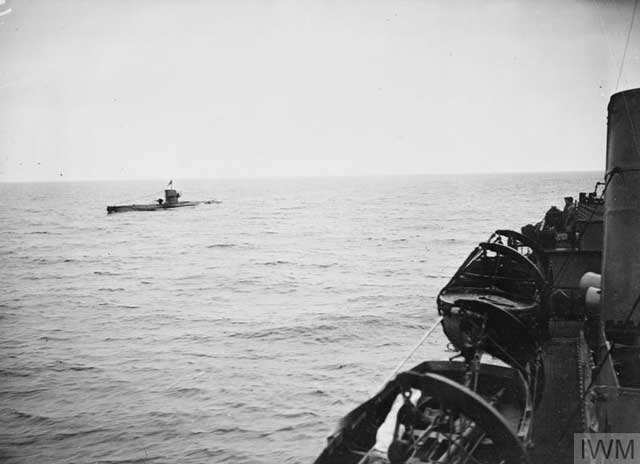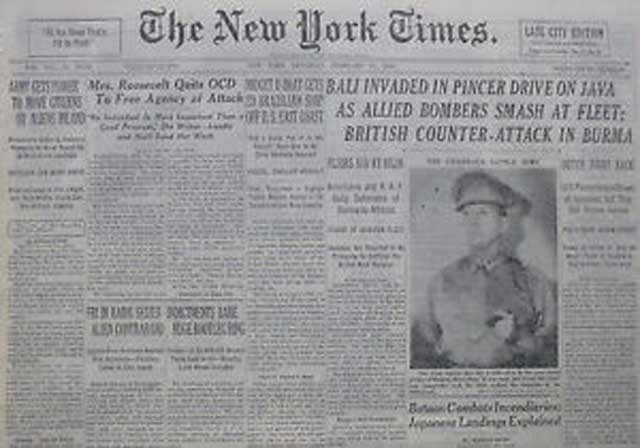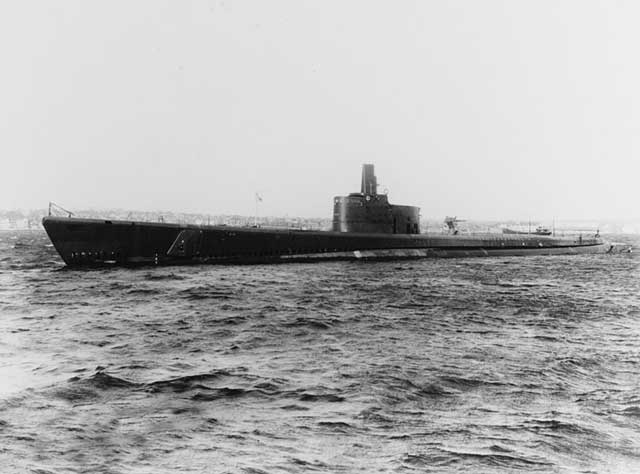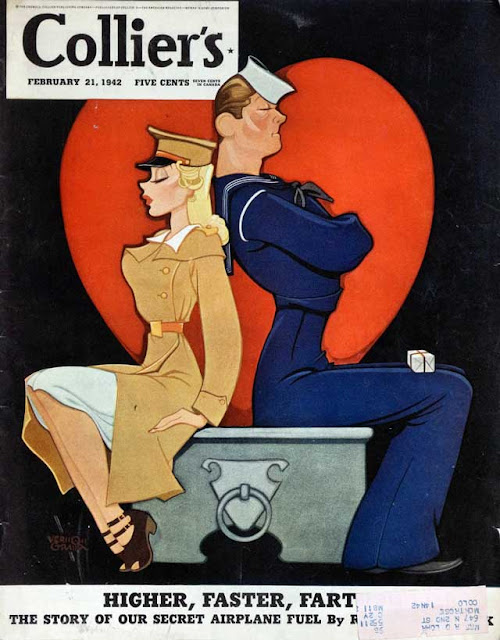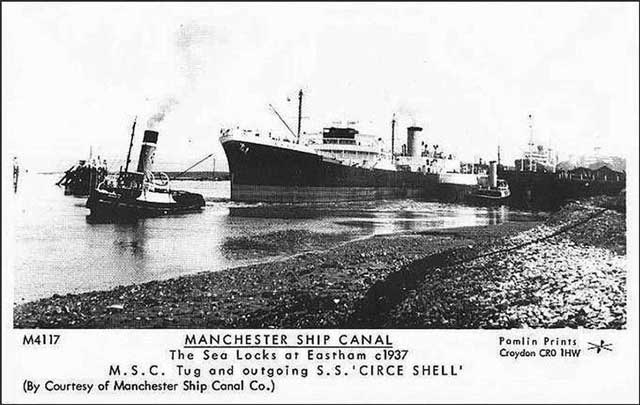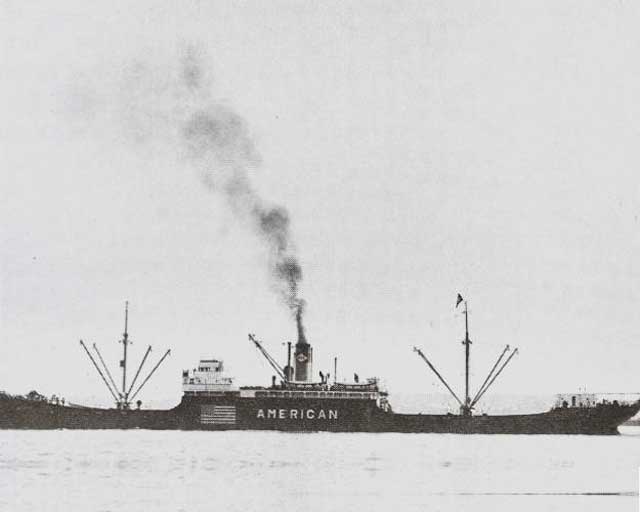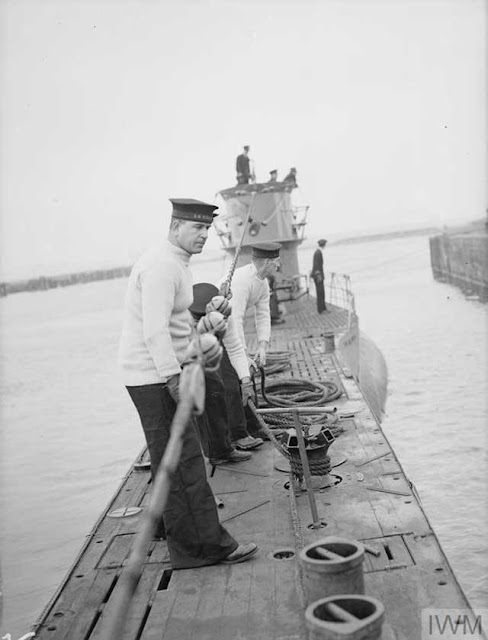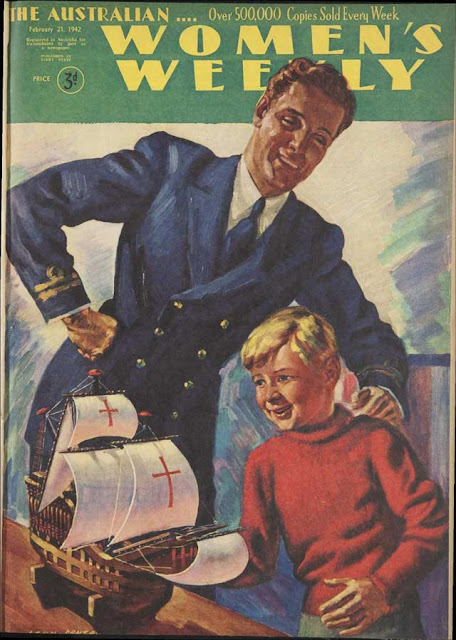Tuesday 24 February 1942
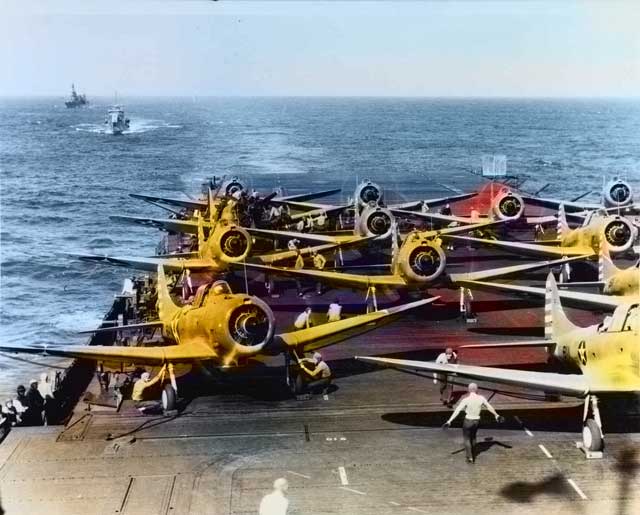 |
| Douglas SBD-3 Dauntlesses on the deck of USS ENTERPRISE (CV-6) prepare for the Wake Island Raid, 24 February 1942. USS Northampton is visible in the background (colorized, US Navy). |
Battle of the Pacific: The evacuation of Java picks up steam on
24 February 1942 as reports flood in of a Japanese convoy heading southwest in the Strait of Makassar. All US Army Air Force bombers are ordered to fly to Australia, and any that cannot fly are to be destroyed. The order comes none too soon, as during the day Japanese bombers attack the Bandoeng airfield and destroy three B-17 Flying Fortresses on the ground. Japanese bombers are in action and they sink 7117-ton Dutch freighter Kota Radja at Surabaya and lightly damage Royal Navy heavy cruiser HMS Exeter and Australian light cruiser HMAS Hobart.
US Navy Task Force 16 (Vice Admiral William F. Halsey) raids Wake Island. Bombing Squadron Six and Torpedo Squadron Six send their SBD Dauntlesses and TBD Devastators from USS Enterprise. Heavy cruisers USS Northampton and Salt Lake City chip in some SOC-1 Seagulls to bomb the island. Northampton and Salt Lake City stand offshore and shell the atoll under the command of Rear Admiral Raymond A. Spruance. The attack sinks two Japanese patrol boats and two Kawanishi H6K4 Navy Type 97 Flying Boats. In the air, F4F Wildcats shoot down a third Kawanishi flying boat. There are still many American POWs on Wake Island, and to their number is added the crew of an SBD Dauntless that is shot down over the island. For security reasons, this raid is not announced by the Navy until 25 March.
US Navy submarine USS Swordfish continues its evacuation of highly placed individuals in the Philippines. Having already evacuated Manuel Quezon, today it embarks U.S. High Commissioner to the Philippine Islands Francis B. Sayre and his party of 12, plus five sailors, at Manila Bay. Swordfish heads for Fremantle, Western Australia, due to the ongoing evacuation at Java.
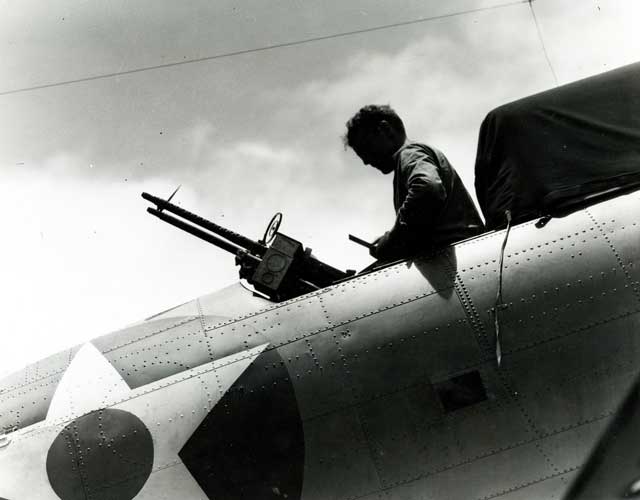 |
| "Wake Island Raid, 24 February 1942. Crewman readies rear-cockpit 30 Cal MG. Mount on a Douglas SBD-3 Dauntless prior to the launching of airstrikes against Wake. View taken on board USS Enterprise (CV 6)." National Archives photograph, 80-G-66279. |
The after-effects of the 19 February air raid are still being felt in Darwin, Australia. Three-masted 1894-ton iron sailing ship Kelat, requisitioned by the Australian Navy and used as a collier, sinks unexpectedly at anchor. This sinking comes as a surprise and is likely due to everyone involved being fully engaged in repairing other damage and simply forgetting to run the ship's pumps.
As they have done previously, the Japanese perform some surreptitious aerial reconnaissance over Pearl Harbor. Japanese submarine HIJMS I-9 sends its Yokosuka E14Y1 Navy Type 0 Small Reconnaissance Seaplane over the naval base. As in previous overflights, this one goes undetected by the US military.
 |
| The Melbourne, Australia, Argus reports on the recent Darwin air aid, 24 February 1942. |
Eastern Front: The weather is improving on 24 February 1942, and this helps the Luftwaffe airlift to the Demyansk and Kholm pockets. The Luftwaffe is using all of its transport planes and many bombers in this airlift, and the supplies are just barely keeping the garrisons fighting. Neither side really has the initiative at this point, but, strangely, both sides think they have it.
European Air Operations: The RAF sends 42 Hampdens and 9 Manchester bombers on minelaying operations near the Frisian Islands and off Whilehlmshaven and Heligoland. Two Hampdens fail to return. An additional five bombers drop leaflets on France and Belgium.
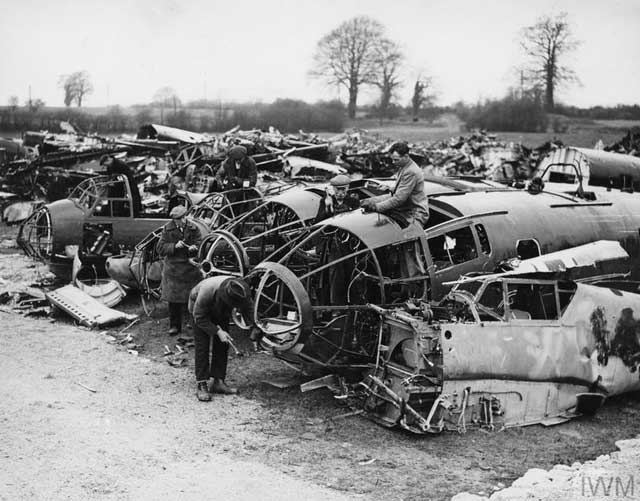 |
| The wrecks of Luftwaffe aircraft in a British scrapyard, 24 February 1942. Types visible are Junkers Ju 88, Heinkel He 111 and Messerschmitt Bf 109E (Dennis Richards: Royal Air Force 1939–1945. Volume I: The Fight at Odds; London, HMSO, 1953). |
Battle of the Atlantic: U-boats have a big day in the North Atlantic on the Convoy routes. About 420 miles southeast of St. John's, Newfoundland, several U-boats spot Convoys ONS-67 and ON-66. They are part of Wolfpack Rochen. It is a very confusing day in the North Atlantic, with multiple U-boats firing torpedo spreads into different convoys and many hits scored - but which ships are hit by which U-boat can be difficult to pin down. Different sources may give different U-boats credit for some sinkings.
U-158 (Kptlt. Erwin Rostin), on its first patrol out of Heligoland, attacks ONS-67 at 08:55. His victim is the 8032-ton British tanker Empire Celt, which is hit by two torpedoes. There are six dead and 47 survivors. The Empire Celt eventually breaks in two, with the stern portion remaining afloat at least until 4 March. U-158 later damages 8146-ton British tanker Diloma at 10:35 with one torpedo, but the tanker is able to make it to Halifax under reduced power. All 60 people on Diloma survive.
 |
| MV Eidanger, sunk on 24 February 1942. |
U-558 (Kptlt. Günther Krech), on its sixth patrol out of Brest, joins the party at 06:51 and ultimately sinks two ships and damages a third (which another U-boat later sinks):
- 8009-ton British tanker Anadara (damaged, then sunk)
- 5578-ton British freighter Inverarder
- 9432-ton Norwegian tanker Eidanger
U-558's first attack is on Eidanger, which is hit by one torpedo but remains afloat. At 09:50, it attacks the convoy again and damages 8009-ton British tanker Anadara, sinks 5578-ton freighter Inverarder, and put another torpedo into 9432-ton tanker Eidanger. All 62 people on the Anadara perish when it is finished off by U-587 (Kptlt. Ulrich Borcherdt) later in the day. Tanker Eidanger takes hours to sink, so U-558 puts another two torpedoes into it at 15:40 to finish it off. Meanwhile, all 42 people on Inverarder survive despite the fact that it sinks fairly quickly. All 39 people on the Eidanger survive. Those are how things break in the North Atlantic, whether you survive depends on which ship you are on, and not whether it sinks right away.
7005-ton freighter Empire Hail is torpedoed and sunk at 01:45 east of St. John's. This sinking is usually ascribed to U-94 (Kptlt. Herbert Kuppisch), but this may not be accurate. In any event, all 49 men on board perish. These convoy battles can become quite difficult to break down and figure out exactly which U-boat sank which ship. Empire Hail either is a straggler or has been dispersed from Convoy ON-66.
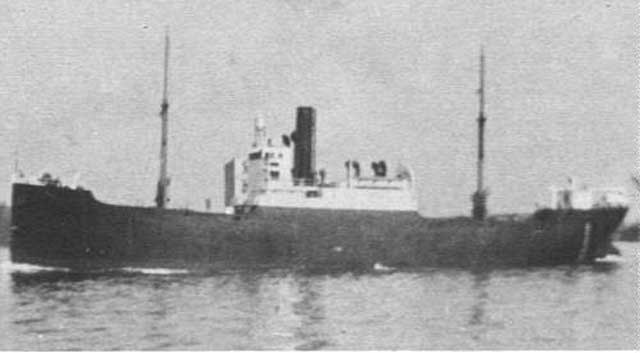 |
| Norlavore, sunk on or about 24 February 1942. |
U-432 (Kptlt. Heinz-Otto Schultze) on its fourth patrol out of La Pallice, might be the U-boat that sinks 2713-ton US freighter Norlavore off the east coast of the United States (this sinking is a mystery). Norlavore, on a journey between Baltimore and Puerto la Cruz, Venezuela, is reported missing on 24 February 1942. There is heavy weather in the area, so the sinking may be related to that. Nobody survives, and it is not certain how many were aboard.
U-752 (Kptlt. Karl-Ernst Schroeter), on its fourth patrol and en route from Bergen to La Pallice, reports torpedoing a tanker in Convoy HX 175. However, it is unclear which ship is involved, if any.
 |
| Paris-soir newspaper, 24 February 1942. |
Battle of the Mediterranean: Fighting on land has quieted down, but the war at sea is never-ending. RAF Squadron No. 830, based on Malta, attacks Axis shipping off Tripoli. No ships are damaged or sunk, but the British lose a Swordfish when it is shot down. The crew perishes.
Battle of the Black Sea: Soviet submarine Shch-213 sinks two ships near the mouth of the Bosphorus. One is the Struma, discussed below. The other is 454-ton Turkish naval auxiliary Cancaya, off Kara Burnu. Everyone survives.
Partisans: Axis forces capture Yugoslav communist Stjepan Filipovićin in Valjevo (now Serbia). After a quick trial, he is hanged on 27 March 1942, aged 26. He is named a National Hero of Yugoslavia on 14 December 1949. He is best remembered for his defiant stance on the gallows when he holds his arms up high and shouts (in his native language) "Death to fascism, freedom to the people!"
Spy Stuff: The Soviets and Germans have been vying for the support of Turkey, and today the Soviet NKVD decides to do something about it in a very roundabout way. They sponsor a Macedonian student in Ankara to assassinate German Ambassador to Turkey Franz von Papen. Exactly why the Soviets want to assassinate von Papen is a mystery, because he is not particularly influential within the Third Reich's upper reaches, but maybe they don't know that. The Soviets may be trying to impress the Turks with their ability to affect events in Turkey. Perhaps they just figure that a former German Chancellor (for about five months in 1932) is a worthy target. The student, in a scene somewhat foreshadowing a latter assassination attempt on Reinhard Heydrich, first tries to shoot von Papen. When that fails, he tries to blow von Papen up. Unfortunately for the student and the Soviets, the student mistimes his throw of the bomb and it explodes in his hand, killing him. Von Papen thus continues on as ambassador and is credited with some diplomatic moves that don't sway the Turks to the Axis but do at least keep it neutral.
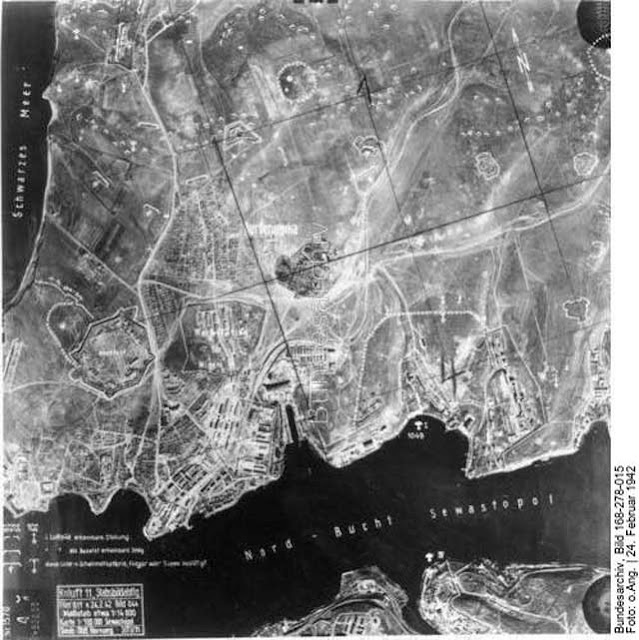 |
| A Luftwaffe aerial reconnaissance photo of Sevastopol on 24 February 1942. The Red Army continues to hold out in Sevastopol against General Manstein's 11th Army (Federal Archive Picture 168-278-015). |
Propaganda: Voice of America (VOA) makes its first broadcast from New York City via short-wave radio. This first show by announcer William Harlan Hale is in German, who opens it by saying:
Here speaks a voice from America. Every day at this time we will bring you the news of the war. The news may be good. The news may be bad. We shall tell you the truth.
VOA is intended for non-US audiences and is designed to give the Allied version of facts and to counter enemy propaganda. While perhaps not as influential as the nightly BBC broadcasts to Occupied Europe, VOA at least provides a face to the United States war effort there. This begins a long history of VOA throughout the Cold War that continues to this day, now broadcast in English and fifty-two other languages.
Applied Technology: Apparently for the first time, the US military becomes interested in the new medium of television. The Bureau of Aeronautics of the US Navy begins the process of procuring television equipment that is capable of operating from airplanes. The Navy isn't quite sure what to do with television but has vague plans to use it for radio-controlled remote operation of weapons and aircraft.
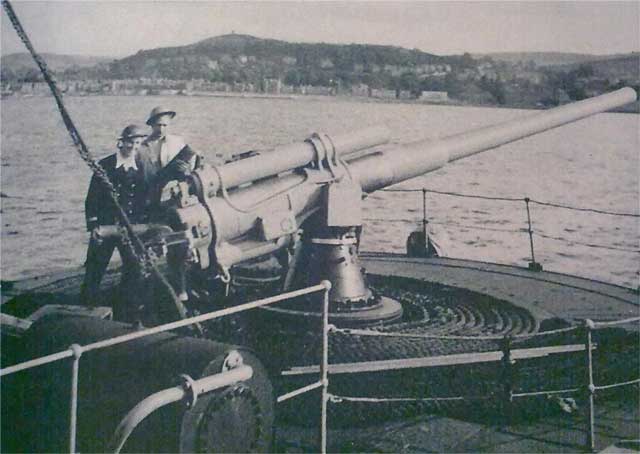 |
| Third Officer John Norie and the senior cadet of the motor tanker Anadara. Later sunk with the loss of all hands (Wreck Site). |
US/British Relations: Brand new (launched on 18 July 1942) escort carrier USS St. George (CVE-17) is transferred under Lend-Lease to the Royal Navy, which renames it HMS Pursuer (D73).
US Military: Major General Joseph Stilwell, Commanding General American Army Forces, China, Burma, and India, completes his journey from the United States to Karachi (now in Pakistan).
Under orders to head to India, U.S. Major General Lewis Brereton and his staff board two bombers and depart Melbourne, Victoria. Brereton's new position is as commander of the10th Air Force.
The USAAF makes big progress in building up its assets in Australia.
- Headquarters, 3rd Bombardment Group (8th, 13th, 89th, and 90th Bombardment Squadrons) arrives in Brisbane, Australia with A-20s.
- Headquarters, the 22nd Bombardment Group (Medium) (2nd, 19th, and 33rd Squadrons and 10th Reconnaissance Squadron) with B-26s;
- Headquarters, 38th Bombardment Group (Medium) (70th and 71st Squadrons and 15th Reconnaissance Squadron with B-26s)
- 35th and 39th Pursuit Squadrons (both Interceptor), flying P-39s.
USAAF forces in Australia at this time are under the command of U.S. Major General George H. Brett, deputy commander of the ABDA Command.
The 503rd and 504th Parachute Infantry Battalions are joined together to form the 504th Parachute Infantry Regiment at Fort Bragg, North Carolina. This unit later becomes famous in England as the "Red Devils." As a result of its renown, it will be allowed to wear a distinctive maroon beret that ultimately becomes standard wear for all paratroopers.
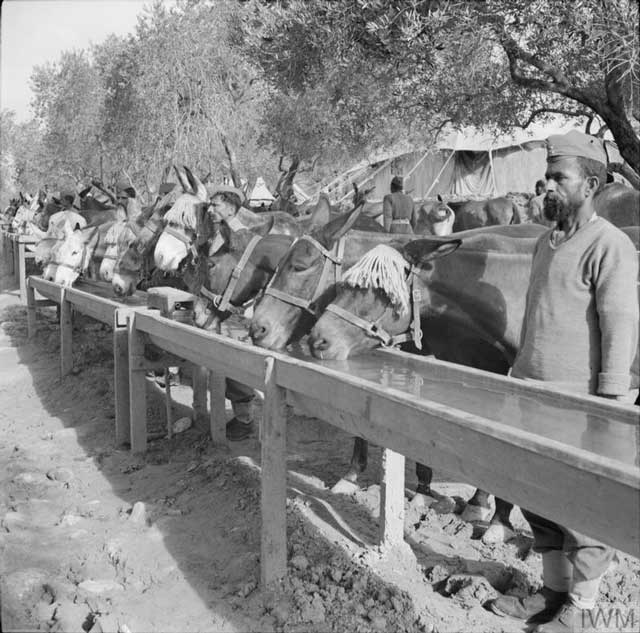 |
| Troops of one of the Indian mule pack companies watering their mules at drinking troughs in a camp in Lebanon, 24 February 1942. Exact location unknown. © IWM (E 8771). |
Chinese Government: Following his two-week visit to India with his wife, Chinese leader Chiang Kai-shek arrives in Kunming on his way back to Chungking.
Holocaust: About 781 (this number has changed over time due to scholarship) Jewish refugees are drifting in the Black Sea off Yam Burnu in 240-ton Panamanian freighter MV Struma en route from Romania to Mandatory Palestine when disaster strikes. Soviet submarine Shch-213 torpedoes Struma, whose engines have failed, killing all of the refugees but one (David Stoliar) plus all 10 crewmen. The Soviet sub is under secret orders to sink all neutral and enemy shipping entering the Black Sea as part of a blockade of the region. Stollar eventually makes it to Palestine and passes away in 2014. Among other things, the Struma disaster becomes a rallying cry within Israel (after it is established) and a subject of recriminations within the British government.
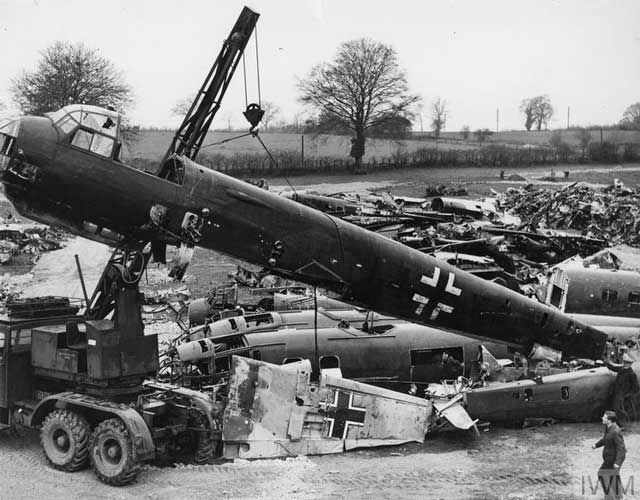 |
| "The wrecks of Luftwaffe aircraft in a British scrapyard, 24 February 1942. The fuselage of a Junkers Ju 88 is being lifted by a crane." © IWM (E (MOS) 56). |
Norwegian Homefront: Norwegian satrap Vidkun Quisling is finding resistance to his rule in unusual places. His government has demanded that the bishops of the Lutheran Church publicly proclaim their allegiance to Quisling's puppet government. Rather than accede to this demand, the bishops begin to resign on 24 February 1942. They are led by Dr. Berggray, Bishop of Oslo, who resigns today, and all others follow on 2 March 1942. Displeased, Quisling suspends the bishops (which is overkill, as they have resigned) and appoints loyalists in their places. This is a key step in a long battle between the leaders of the local church, the judiciary, and other prestigious organizations to Quisling's rule.
German Homefront: Anton Drexler, who founded the German Worker's Party (DAP) which ultimately became the NSDAP on 24 February 1920, passes away from natural causes in Munich on 24 February 1942. Drexler, an almost forgotten historical figure, was the co-founder of the DAP in Munich on 5 January 1919. In September 1919, Drexler noticed a new member in the audience who got into a loud argument with another attendee. Impressed by this stranger, Drexler went up to the man, gave him a pamphlet, and encouraged him to join the DAP. The man was Adolf Hitler, and this was his first contact with the organization. Hitler received approval from his army superiors to join the DAP and quickly began raising its profile. Hitler did not replace Drexler as leader until July 1921. After that, Drexler left the party completely in 1923 and faded into obscurity. However, Drexler did later reestablish a minor connection with the NSDAP, though he never again attained any power.
 |
| Moses Anger, who is registered at Auschwitz on 24 February 1942. He will perish there on 3 March 1942 (Auschwitz Memorial). |
American Homefront: Just as automobile manufacturers have converted to production of military vehicles, gun manufacturers cease all production today of civilian 12-gauge shotguns and retool for military production.
Future History: Joseph Isadore Lieberman is born in Stamford, Connecticut. After graduating from Yale University Law School, Joe (as everyone calls him) embarks on a legal career, then embarks on a political career. He is elected to the Connecticut Senate in 1970, where he serves for a decade, then serves as Connecticut Attorney General from 1983 to 1989. After that, Lieberman serves as US Senator from Connecticut from 1989 to 2013. Lieberman wins the 2006 Senate race running as an Independent rather than on his typical Democratic Party line. Lieberman is instrumental in the creation of the Department of Homeland Security (DHS) in 2002. Since leaving the Senate, Joe Lieberman has remained active in politics.
Paul Pond is born in Portsmouth, Hampshire, England. As Paul Jones, he becomes a popular radio personality in Great Britain, including presenting "The Blues Show" on BBC Radio 2 for 32 years up until April 2018. Paul Jones also records numerous albums, from "My Way" in 1966 (including the hit song "High Time") to "Suddenly I Like It" in 2015. Paul Jones remains active as of 2019.
Patricia Joanne "Jenny" O'Hara is born in Sonora, California. She becomes a noted stage, film, and television actress in the United States. She is particularly noted for being on numerous popular television series beginning in 1975 and continuing up to the time of this writing, though never becoming a celebrity. Jenny O'Hara remains active as an actress.
 |
| Abraham Bienenstock, registered at Auschwitz on 24 February 1942. He will perish there on 28 February 1942. |
February 1942February 1, 1942: The US Navy Strikes BackFebruary 2, 1942: Germans Recovering in RussiaFebruary 3, 1942: Japanese Shell and Bomb SingaporeFebruary 4, 1942: Battle of Makassar StraitFebruary 5, 1942: Empress of Asia SunkFebruary 6, 1942: The Christmas Island BodyFebruary 7, 1942: The Double-V CampaignFebruary 8, 1942: Japan Invades SingaporeFebruary 9, 1942: French Liner Normandie CapsizesFebruary 10, 1942: US Car Production EndsFebruary 11, 1942: Tomforce Fails on SingaporeFebruary 12, 1942: The Channel DashFebruary 13, 1942: Japanese Paratroopers In ActionFebruary 14, 1942: RAF Orders Terror RaidsFebruary 15, 1942: Japan Takes Singapore
February 17, 1942: Indian Troops Defect to JapaneseFebruary 18, 1942: Battle of Badung StraitFebruary 19, 1942: FDR Authorizes Internment CampsFebruary 20, 1942: O'Hare the HeroFebruary 21, 1942: Crisis in BurmaFebruary 22, 1942: Bomber Harris Takes OverFebruary 23, 1942: Bombardment of Ellwood, CaliforniaFebruary 24, 1942: US Raid on Wake IslandFebruary 25, 1942: Battle of Los AngelesFebruary 26, 1942: Gneisenau EliminatedFebruary 27, 1942: Battle of Java SeaFebruary 28, 1942: Battle of Sunda Strait2020

